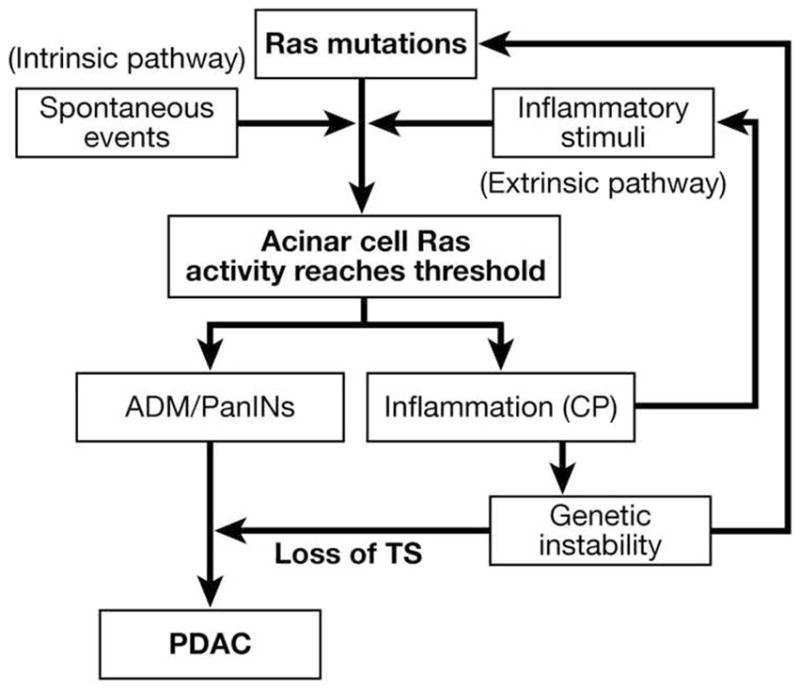Figure 1.

Ras activity levels control the development of pancreatic diseases. For the initiation of pathologies, Ras activity levels must be elevated beyond a threshold. This level of activity can be achieved by high levels of extrinsic Ras activators (extrinsic pathway), by intrinsic alterations of Ras activity including activating mutations of K-Ras (intrinsic pathway), or by a combination of these 2 pathways. Pathologic levels of Ras activity cause acinar cells to undergo acinarductal metaplasia (ADM) and to form PanINs. High levels of Ras activity also lead to the generation of inflammation resembling CP. Inflammation induced genetic instability, and increased proliferation likely increases the probability of genetic alterations including mutations in K-Ras and loss of tumor suppressors (TS), which are required for the development of PDAC. (Modified from Ji et al1).
